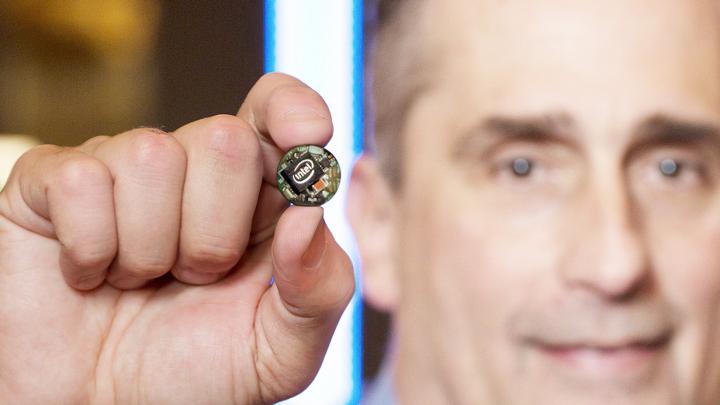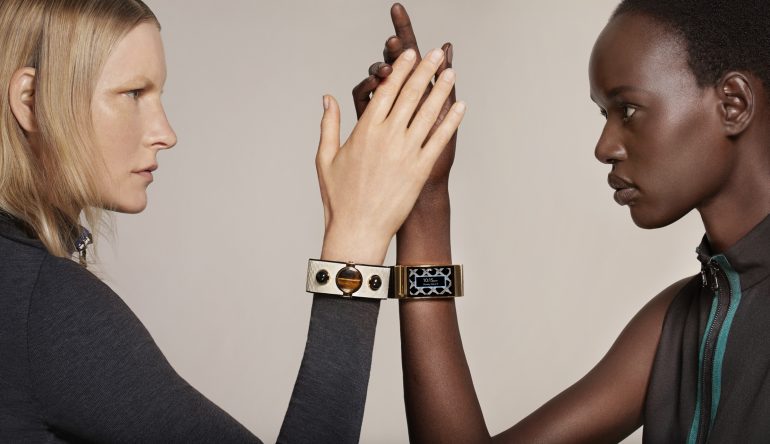More than the waves of technology before it, wearables face a fashion problem that has become a major barrier to adoption. Laptops, tablets, and smartphones use design as a selling feature, but for these devices its more function over form. With technology we wear, it’s a whole other story. If wearables are going to succeed, they need to be worn, and what we wear today is more an expression of our style than a tool to keep us safe and warm. While most tech companies struggle to understand this, Intel has taken a fashion-first approach to wearable tech by moving tech into the background and letting those that make accessories and clothing lead the charge.
I recently had a chance to sit down with Ayse Ildeniz, Intel’s VP of New Devices Group, to talk about Intel’s partnerships with some of the world’s leading fashion brands, the company’s latest wearable tech module, Curie, and Intel’s mission in creating a fashionably connected world.
“Today what I see is a bunch of technology companies creating technological devices as wearables for people. What we want is for accessories that you are already wearing to be smart.”
Ildeniz sat across from me wearing a pair of stylish specs and a black snakeskin bracelet set with gems and pearls. The bracelet, of course, was MICA, the $500 wearable collaboration between Intel and popular fashion brand Opening Ceremony. MICA, which stands for ‘My Intelligent Communication Accessory’, was one of the devices last year that marked a key shift in the wearable space: one focused on creating gadgets to a new approach attempting to marry tech and fashion. MICA also reflects Intel’s vision of a world where things you want to wear are smart and connected.
“There is a strategic difference in how Intel is approaching wearable technology compared to the rest of the industry,” Ildeniz told me. “Today what I see is a bunch of technology companies creating technological devices as wearables for people. What we want is for accessories that you are already wearing to be smart. There is a very big difference between the two: putting the smartness in what you are already wearing versus building something from scratch. This is why we made it a priority to partner with people who know how to do this. It’s been their job to create a brand. They know their business model and they lead it and we are the electronic supplier to what they are trying to build.”

Ildeniz of course is referring not only to Intel’s partnership with Opening Ceremony, but also a slew of other fashion partners, including a multi-year collaboration with Italian eyewear company Luxottica, which controls over 80% of the world’s major eyewear brands (Ray-Ban, Oliver Peoples, Oakley, etc.). Intel also has a partnership with watch and jewelry group Fossil.
Intel’s “powered by” strategy is much different than how most of the other tech giants have approached the wearable opportunity. Samsung, Motorola, and even Apple are all building the tech and the accessory. And while we have seen some fashion collaborations, like Samsung and Black Diesel or Google Glass and DVF, they have been tacked on as an afterthought rather than integrated as an essential part of the product. For now, most of the tech companies seem to think that they can do it all, which often ends up creating good tech but awful looking accessories. This may be the reason why many wearables so far have seen slow adoption. Intel wants to turn this around. “The aesthetic and the fashion are most for us,” Ildeniz explained.
“60% of the people said that it needs to look good and it needs to be aesthetically pleasing or I’m not going to put it on me.”
In fact, Intel believes that it isn’t the tech companies at all that should be leading this wave. “The fashion needs to lead this,” Ildeniz told me. “They are the ones who need to be at the forefront and in the driver seat rather than what the technology companies are doing.”
Intel’s fashion-focused strategy is rooted in what people are looking for in wearable tech. Last year, Intel conducted research to better understand what people wanted in a wearable. One portion of the people they interviewed said that they were looking for a wearable device to get information about themselves, such as steps and heart rate. The other half said that they wanted a device that let them communicate and stay connected. But the common request from the majority of the group was that regardless of what the device did it needed to look good.
“A huge chunk, 60% of the people, said that it needs to look good and it needs to be aesthetically pleasing or I’m not going to put it on me. Everybody that we interviewed kept on saying that what I put on myself is so personal and it has to be a reflection of who I am,” said Ildeniz. “I mean, there is a reason why I am wearing these glasses and you are wearing your glasses,” she told me. “We are trying to say something to the rest of the world. And so the people we interviewed said that the wearable is something they have to love. A big part of what you wear is about what brands you want to carry on you and what image you want to pull off to the people you interact with. It’s that aesthetic element that we felt was missing.”
But if Intel is right, and the fashion industry is the key to taking wearables from the wrists of early adopters to the bodies of the mainstream, why are we not seeing fashion brands jump at the chance? Ildeniz says that it’s still early days.
“From an industry accessory perspective, there are two extreme camps. Some say it’s too techy, too gadgety and too complex and people don’t need this and we don’t want to deal with this,” said Ildeniz. “And then there are those that are at the forefront who go, ‘we‘ve got to get into this now, and we are the ones that need to define this, and let’s make it a reality.’ Of course, as Intel, we would rather work with the innovative thinking category creators, which is why we have picked fantastic partners to drive this thing. But in many ways it is early for this industry to come to grips with this. They want to be there, but it has to be right. Otherwise, it will be gimmicky and too weird and it won’t work.”
Ildeniz believes that the first step in moving this forward is getting the fashion and the tech companies together to talk. Intel’s partnership with the CFDA, the Council of Fashion Designers of America, is a big part of brokering this conversation. As part of this, Ildeniz has been regularly flying out with her engineering team to New York to sit with the designers on the council so that the two can ask each other questions and learn. “It has been this beautiful learning experience and we are educating each other collaboratively,’ she explained. “We are finding out how fast we can pull them into technology and how fast we can learn from them in how to do it right.”

Of course, if fashion is to take the driver’s seat, then fashion needs to be given the tools to make their accessories and garments smart. For Ildeniz, one of the most powerful tools Intel is providing to companies is Curie. Curie is a wearable tech module the size of a button. This low-power solution launched at this year’s CES, and is Intel’s first purpose-built wearable SoC (system on a chip) that can run for a long period of time using a coin-sized battery with a motion sensor, Bluetooth and battery charging capabilities.
“It’s the genius and the curiosity in the people that you have to bring out and I think that this is the next wave.”
“It’s a module for wearables but it is so simple and so small that you can pretty much put it anywhere and everywhere and you don’t have to be the most sophisticated company with 500 engineers,” she said. “You just need to get this and a couple of smart people with integration and software capabilities and you can make anything you want smart. I am hoping it will pave the way for developers and fashion makers to start to integrate intelligence into everything they already do. It’s the genius and the curiosity in the people that you have to bring out and I think that this is the next wave. Anybody and anyone can be a creator as long as we give them simple and smart technology.”
But Ildeniz is the first to admit that the wearables category is still in its infancy. “The more demand there is, the more big companies will jump on it and companies like us will own it as an issue and a challenge. As people swarm into this industry most of the problems will start running and be fixed. I find it very exciting that it is so early, that it is still the wild, wild west and that we get to experiment but we still have to find the real user models. We are not there.”
Images courtesy Tom Emrich and Intel Newsroom.


